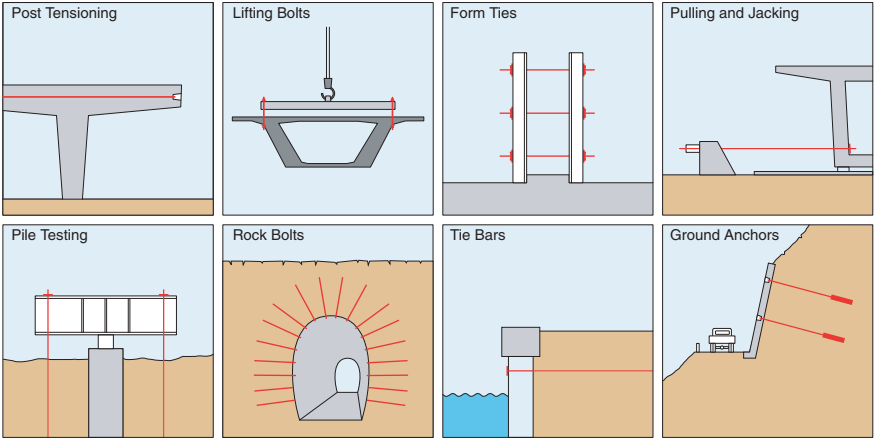The first ever structure built with a prototype DYWIDAG Post-Tensioning System using bars was the arch-bridge Alsleben (Germany) in 1927. From that time on, DYWIDAG has continuously improved its systems to keep up with the growing demand of modern construction technology.
The post-tensioning system for the prestressing of structures with bars (internal bonded, unbonded and external tendons) is regulated in European Technical Approval ETA-05/0123.
Internal bar tendons are mainly used in concrete, composite and masonry structures. Internal unbonded and external bar tendons are used for concrete, composite, steel, timber and masonry structures. Typical applications are transversal prestressing, strengthening of bridges, rehabilitations, connection elements for steel structures and machines and temporary applications.
Advantages and Characteristics:
- Easy system handling
- Robust design
- Flexible transport length due to couplers
- Also applicable for (very) short tendons due to little slip
- Used in new structures and for strengthening existing structures
- Suitable as longitudinal or transversal tendons
- Usable as shear strengthening
- Usable as straight or curved tendons
- Can be used as hangers for concrete or steel arch bridges
- Usable for the temporary or permanent connection of precast concrete elements
- Many combinations of any structural material are possible (such as steel with concrete)
- Preassembled unbonded or external tendons with permanent corrosion protection are available
